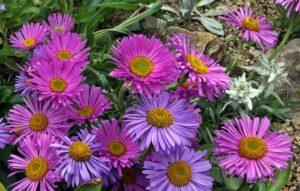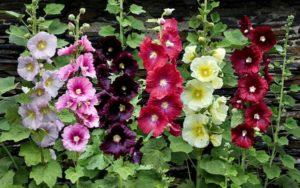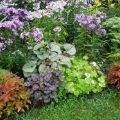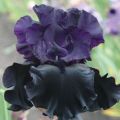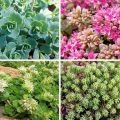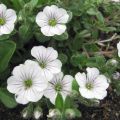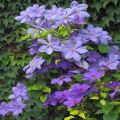Description of varieties and types of terry aquilegia, planting and care rules
Aquilegia is a perennial flowering bush belonging to the Buttercup family and numbering over a hundred varieties. The plant, in addition to various species, has many names - catchment, eagle, magic flower of elves and others, which were given for an unusual and fabulous form. That is why many gardeners strive to grow aquilegia on their plots, and the unpretentiousness of the plant allows you not to make much effort for this.
Description of the plant
Aquilegia is a spreading bush, reaching a height of 1 meter. The root system is strong, thick and well developed, usually less than half a meter. The leaves are rounded, lacy, resembling clover. Basal greens grow on long, dissected petioles, on stems - sessile.
Flowers - drooping to the ground, double and large, can grow up to 10 centimeters. Most have elongated growths - spurs that serve to collect nectar. The color scheme is different and can combine several shades.
Where does he prefer to grow?
The Elven Slipper prefers shady forests, hillsides, or meadows. In the wild, aquilegia can be found in the Caucasus, Altai, Crimea, and the Far East. Outside of Russia, the catchment blooms in alpine meadows, in America, as well as in Europe.
Varieties of the Barlow variety
Aquilegia Barlow is a hybrid of the common eagle and other hybrids rarely found in the wild.
Barlow Pink
Flowers: bright red. Height: 80 centimeters. Flowering period: 2 months. Preferences: shady area and high humidity.
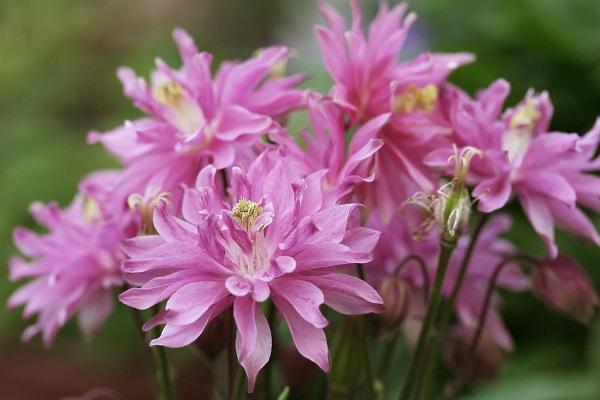
Barlow Winky
Flowers: double, not wilted, of various colors. Height: 50 centimeters. Flowering period: May-August. Features: frost resistance and wind resistance.
Christa
Flowers: purple, wilting at the end of the day. Preferences: partial shade.
White
Similar to the Christa variety. The only difference: the shade of the flowers is white.
Nora Barlow
Flowers: white-pink, sometimes white-red, with a dark core, large, double. Height: 70 centimeters. Form: spreading.
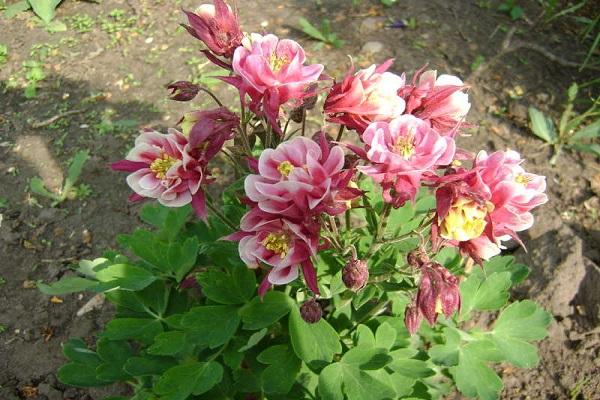
The specifics of growing flowers
Aquilegia is very unpretentious, but there are still some features when growing.
Site selection and preparation
The ideal place for aquilegia is partial shade, since the complete absence of the sun will reduce the number of flowers, and constant direct light will not only affect brightness, but can be detrimental to the plant. If there is no shadow in the area, then the footprint should be shaded. It is better to choose loamy and moist soil. You should first dig up the garden and get rid of the weeds.
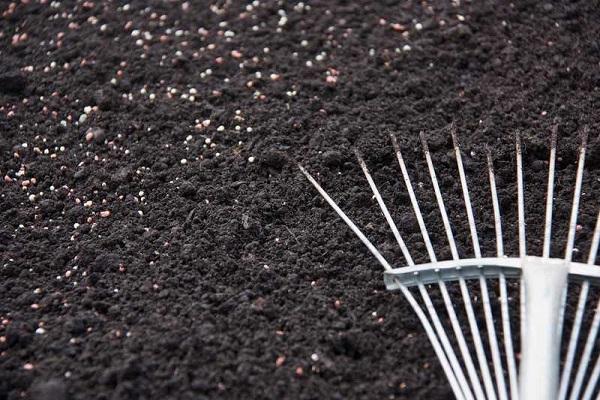
Preparation of planting material
The planting material, namely the aquilegia seeds, collected immediately after the fall, is wrapped in a damp cloth and left to ripen in a cold, dry place, in the refrigerator, and then they are planted. If planting occurs with the help of seedlings, then the seeds are also allowed to ripen, cooling, and then the following preliminary actions are performed:
- in pre-prepared containers with soil, lower the seed by 3 centimeters;
- sprinkle a little peat on top;
- pour gently with warm water and cover with foil to create a "greenhouse" effect;
- then water with a small amount of water every 2-3 days;
- three weeks later, having noticed the emergence of seedlings, the film should be removed;
- after the appearance of 4 leaves, the seedlings are ready for planting in the garden.

Landing scheme
As already mentioned, there are two options for planting aquilegia: seeds and seedlings. Seed planting rules:
- Late August-early September:
- prepare a seat;
- place seeds;
- sprinkle with earth - about 1.5 centimeters;
- water a little;
- mulch with humus or peat.
- In the spring, after the snow melts: after the seeds have cooled, sow in a prepared place, controlling the moisture balance.
Transplanting seedlings:
- in June: seedlings are planted in the prepared soil at a distance of 20 centimeters from each other, trying not to damage the roots.
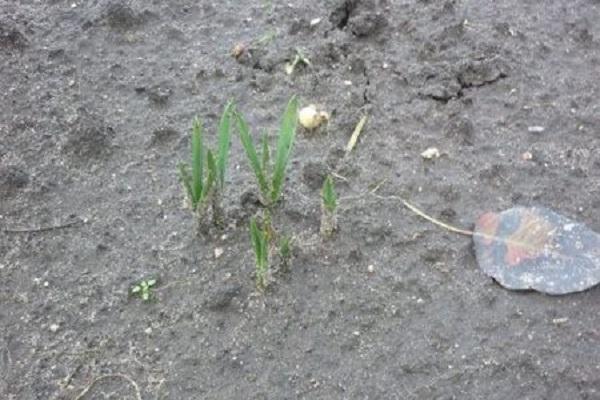
Plant care
In order for aquilegia to grow strong and healthy, basic care rules should be followed.
Weeding and loosening the soil
Loosening of the soil, no more than 20 centimeters, is carried out after each watering or rain so that oxygen does not stagnate. Also, do not forget about weeding when weeds appear.
Watering
Aquilegia loves moisture, but the plant should not be flooded. Watering is sufficient as soon as the soil is dry. It is advisable to use irrigation agents to simulate rain, since the leaves of the plant love to absorb raindrops. In a rainy summer, additional moisture is not needed.

The soil
Aquilegia roots often break through the ground, so the plant needs to fill up the soil annually, while removing an 8-centimeter layer of the old one.
Top dressing
The best time to apply organic or mineral fertilizers is cloudy or rainy weather. If the summer is sunny, then you should feed aquilegia in combination with watering in the evening, and then shade well for a day. Fertilizers are applied in May, June and after flowering.
How to care for aquilegia after flowering?
After the flowering of the aquilegia, it is necessary to prune the expired shoots to the leaf outlet. Healthy scraps will make great compost, infected and weak ones need to be burned. Also, the post-flowering period is the best time to divide the plant and collect the seeds.
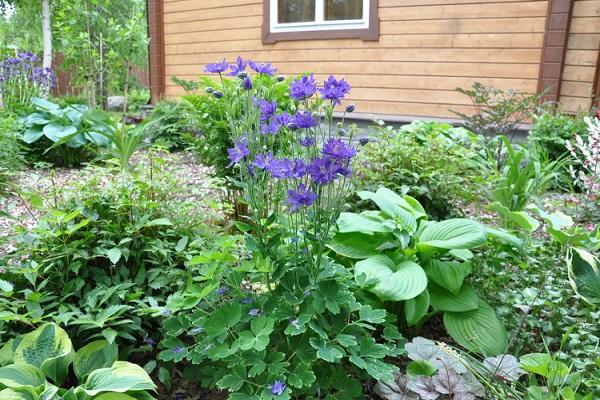
Winter care
Aquilegia is frost-hardy, however, upon reaching 5 years of age, the roots of the plant are selected to the surface and require shelter in winter. To do this, the bush should be mulched with humus with peat compost and sprinkled with fresh soil. Preparatory measures for the cold weather should begin in the fall.
Pruning
As already mentioned, aquilegia pruning is done after flowering to avoid self-seeding and rejuvenate the bush.
Control of diseases and pests of aquilegia
The elven slipper is susceptible to the following diseases:
- powdery mildew - appears with a lack of sunlight and high humidity. Prevention - processing greenery with a sulfur solution. Treatment - folk and chemical means;
- mosaic is the most dangerous, incurable disease. If symptoms are found, the bush should be dug up and burned;
- gray rot - at the initial stage, treatment with Fundazol is possible, when started, digging out the plant and further burning.

Of the pests, aquilegia can be attacked by aphids, caterpillars and ticks. Folk remedies or chemicals should be used against them. If untreated, the plant can die in a couple of days.
Reproduction
The bush can be propagated in several ways.
Seeds
Aquilegia seeds are harvested after flowering. To do this, future "parents" should wear a gauze bag for collecting seeds so as not to collect them from the ground. However, the chance of getting an identical mother flower is very low, since the plant is inter-pollinated.
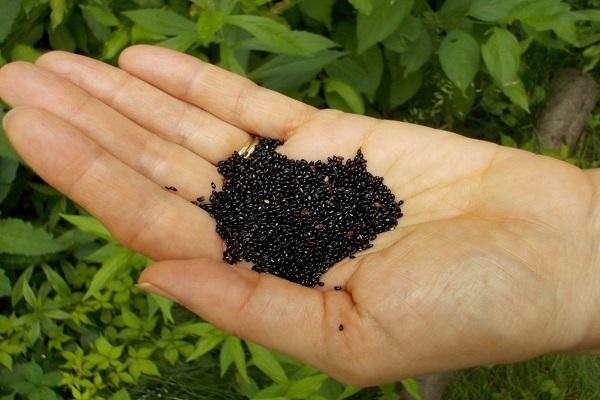
Divide the bush
Dividing the aquilegia is not the best way to reproduce, as it can harm the plant. An adult bush that has reached 5 years of age is suitable for this method:
- cut the dug root into pieces with a knife, leaving 3 buds on each;
- plant the split root in the holes and water immediately;
- feeding should be carried out only after grafting.
Cutting in the spring
The surest way to get the original look of the flower. To do this, use young spring shoots, cut off before the greenery blooms:
- cut the stalk near the soil itself;
- treat the cut with a root growth stimulating agent;
- fertilize the planting place with sand and peat and moisten;
- plant the cuttings a centimeter in depth;
- the bed must be shaded;
- disembarkation to a permanent place takes place in August.
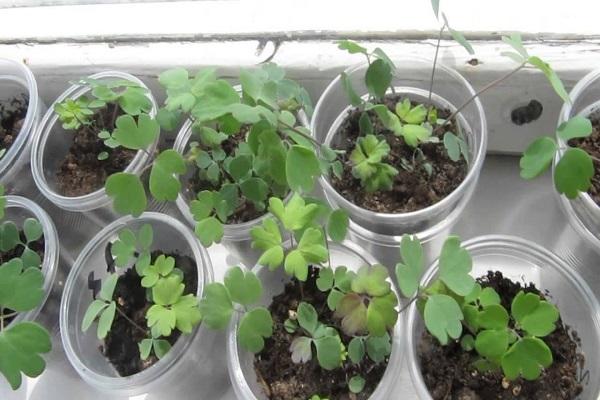
Use in landscape design
High varieties of aquilegia go well with irises, bells, hosts, poppies and other flowers, while low varieties will advantageously decorate alpine slides, rockeries, and also complement carnations. In addition, it is in harmony with spruce and fir trees, and will also be an excellent decoration for a pond. Another interesting composition will be the planting of an eagle of various colors and types.
Possible problems when growing terry aquilegia
The most important and dangerous problem is disease, due to improper care or an invasion of pests, from which the flower can die. However, prevention and timely treatment will help preserve the plant..
